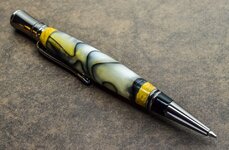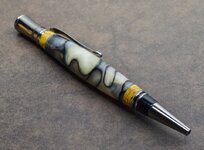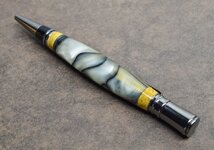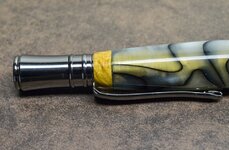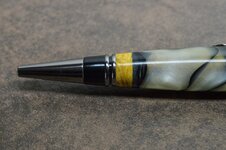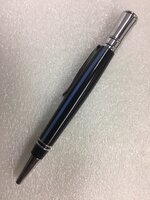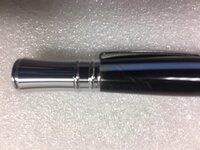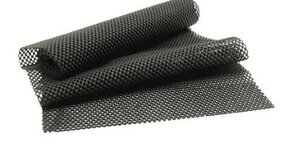Yankee Remedy
Member
I botched the drilling process probably because I was in such a hurry to use my new drill press instead of using the collet attachment on my lathe. That would have saved me all kinds of problems. The Spalted Pearl or Aquapearl blank was a cylindrical piece that would have fit perfectly in my 3/4 inch collet.
So I cut off 1/4 inch on both sides of the blank then used some stabilized elder burl I had leftover from another project.
As the saying goes "When life gives you lemons, make lemonade"
Thanks to Mal of Magpens suggestions I was able to get a nice finish using the Novus scratch remover and polish. Thanks for the help Mal!
Mark James also suggested I try something like the Executive style pen. Thanks Mark!
Gary
So I cut off 1/4 inch on both sides of the blank then used some stabilized elder burl I had leftover from another project.
As the saying goes "When life gives you lemons, make lemonade"
Thanks to Mal of Magpens suggestions I was able to get a nice finish using the Novus scratch remover and polish. Thanks for the help Mal!
Mark James also suggested I try something like the Executive style pen. Thanks Mark!
Gary

